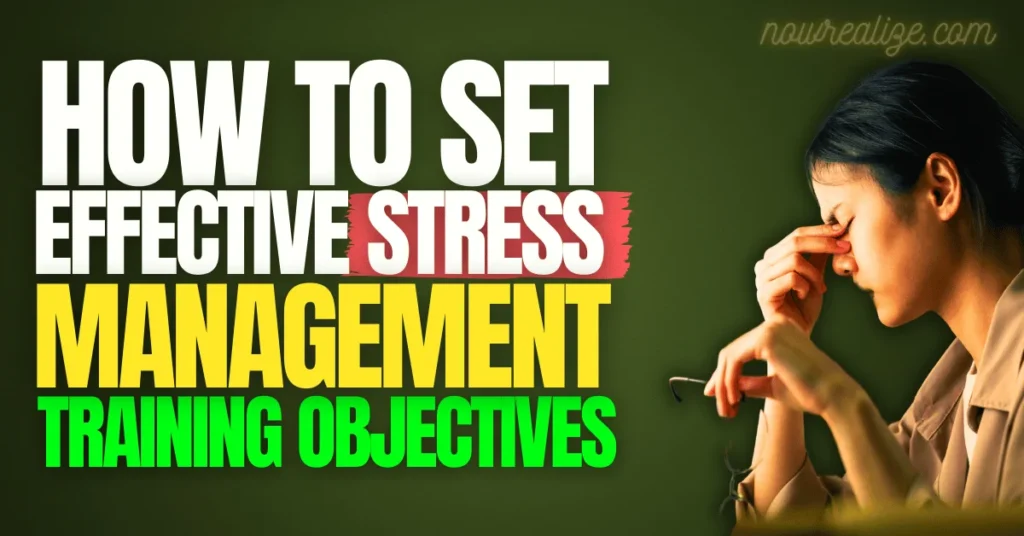
Table of Contents
So you wake up in the morning feeling like a fried potato huh? Yeah, like adrenaline rushing to work or the next task. Do you constantly juggle work, family, and personal life, leaving you drained and unproductive? It’s time to take control of your well-being. Effective stress management training is the key to getting those nerves down and becoming more balanced. But how do you know if the training you are setting is fruitful or not? Let’s find out and set stress management training objectives.
Let’s Dive into Core Causes!
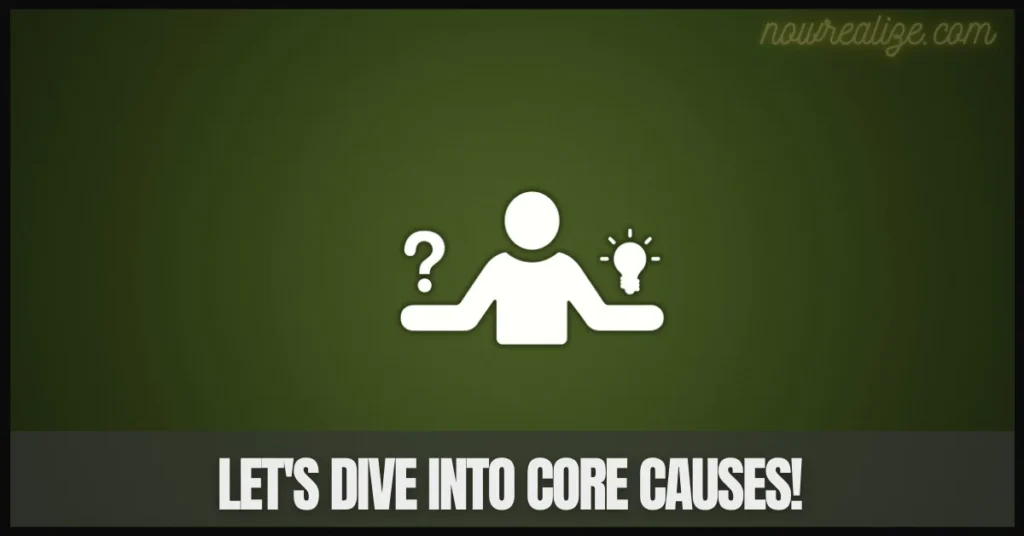
Identifying the core issue is the initial step toward discovering a solution. Determine what works best for you before taking action.
Identify the Primary Stressors:
What’s bugging you? Sit back and relax take a deep breath and think for a few seconds what is causing that sense of tickling always. Is it work overload, relationship issues, financial worries, or a combination?
Assess your Current Coping Mechanisms:
How are you handling it now? Then find out, if the activities you are already following are worth it?, is it helping? whether healthy or not, provides a baseline for improvement. Are you overworking, isolating, or relying on unhealthy habits? Now is the moment to be truthful with yourself.
Determine their learning styles:
How do you absorb information? That is important for your best performance to go advance in selecting a training program. Are you a visual learner who prefers diagrams and presentations, an auditory learner who benefits from discussions and explanations, or a kinesthetic learner who learns best by doing? It is crucial for effective training.
Aligning Objectives with Desired Outcomes

Set Precise Goals:
Okay, now let’s get down to business. To make your stress management training worth it, you need clear goals.
You and Mirror:
Ensure the objectives Created are the specific needs and challenges you have based on what suits you (mirror justified).
Dont go Fluff:
Make sure the goals set can be accomplished within the training timeframe.
Time-bound:
You don’t want to follow another plan for another month? right, it will be a waste. Or you may outrun if not time-bound. Set it in the timeframe.
Sample Objectives Based on Common Stressors
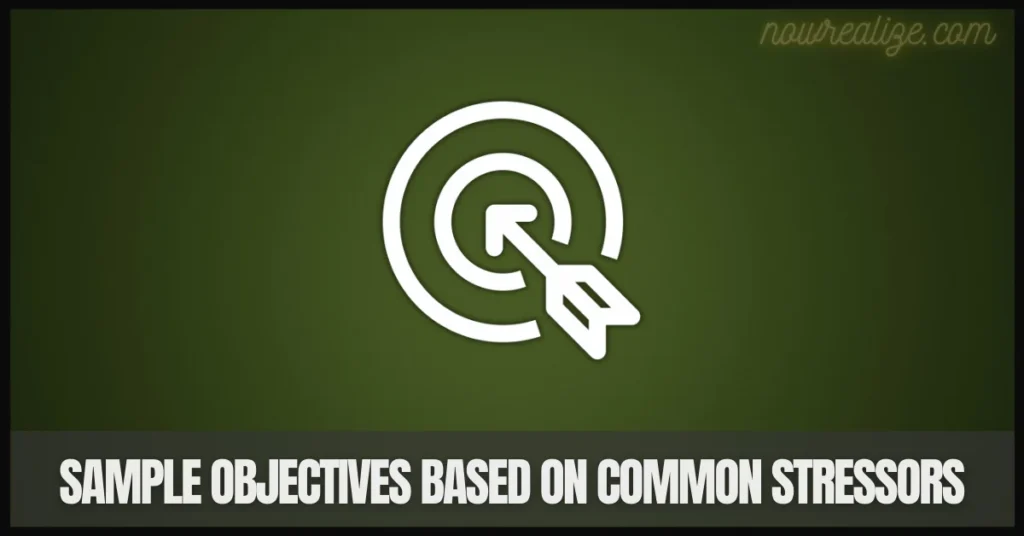
Stress from Work Overload:
Most of us are stuck with an overload of work let’s check what are common things you can include in your training program or just make new ones.
- Make your task to reduce Weekly overtime hours by 50% within 2 months.
- Master two time-saving methods in a month. Such as Master time blocking. Prioritize tasks effectively. (believe me, it works)
- Limit yourself to two tasks per week over the next month to decrease your workload. (set for yourself 25% of the total workload you are taking right now)
Stress from Relationship Issues:
- They say communication is the key right? Get communication classes to enhance yourself here. Honestly here sit back and listen for some time just listen. (it will make things easy)
- Schedule one quality Special time per week for the next month. (It will be worth it)
- Practice active listening to help slow down arguments. it will reduce drastically.
Stress from Financial Worries:
- Create a monthly budget and stick to it for three months with discipline.
- Increase savings by 10% within six months.
- Explore two potential income-generating opportunities within one month. (Passive income is Saviour)
Let’s Focus on Relaxation Techniques
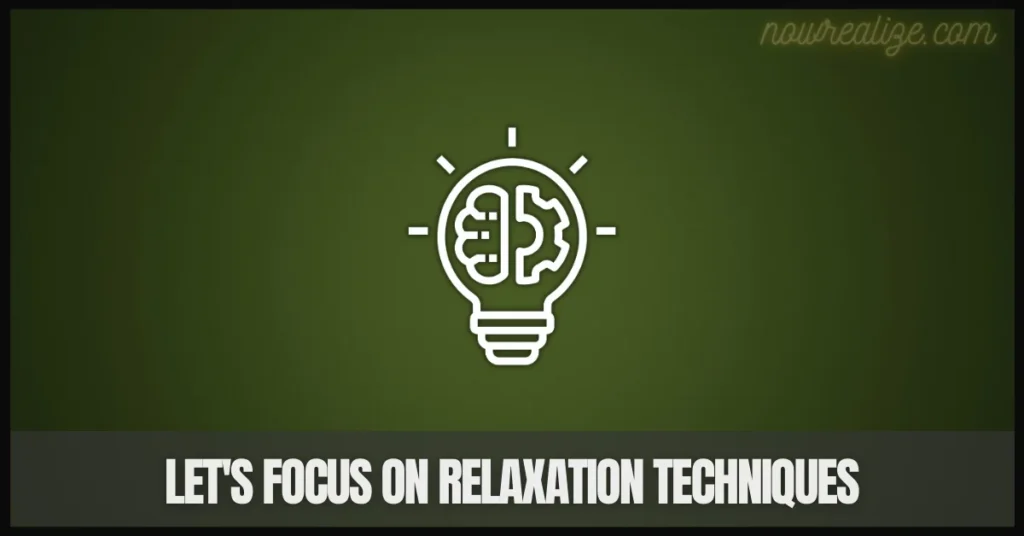
Relaxation techniques are essential for managing stress. Let’s incorporate a section dedicated to these powerful tools.
Managing Stress and relaxation techniques are like the baseline to it. Let’s dive into a section dedicated to these powerful tools.
Unwind and Recharge
1. Deep Breathing: Your Quick Stress Relief
Benefits of Deep Breathing:
- Reduces stress and anxiety
- Lowers blood pressure
- Improves focus and concentration
- Boosts energy levels
- Promotes relaxation
Simple Guided Practice:
Sitting on the couch? find a quiet spot. Sit or stand comfortably. Hold one hand on your chest, and the other on your tummy. Inhale gently through your nose while counting to four. Hold your breath for four seconds. Exhale gently through the mouth for an entire count of four. Continue this pattern for several minutes.
Remember:
Consistency is key. Engage in daily deep breathing exercises to enjoy its benefits.
2. Meditation: Stillness for the Mind
Benefits of Meditation:
- Reduces stress and anxiety
- Improves focus and concentration
- Enhances emotional well-being
- Boosts self-awareness
Basic Meditation Technique:
Find a quiet space. Sit comfortably with your back straight. Close your eyes and concentrate on your breathing. Notice your thoughts without passing judgment. When your mind drifts, calmly return your focus to your breath. Begin with 5-10 minutes and slowly extend the time.
Remember:
Meditation is a practice. Be patient with yourself.
Progressive Muscle Relaxation: Unwinding Your Body
: Progressive Muscle Relaxation (PMR) involves tightening and then relaxing various muscle groups to alleviate physical tension.
How to do it:
- Choose a quiet spot to either lie down or sit comfortably.
- Begin by tightening the muscles in your feet, hold for a few seconds, then release and notice the relaxation.
- Work your way up your body, tensing and releasing each muscle group (calves, thighs, buttocks, hands, arms, shoulders, neck, and face).
- Pay consideration to the difference between stress and relaxation.
Remember:
The goal is to become aware of your body’s tension and to learn to release it. Regular practice can significantly reduce overall stress levels.
Conclusion:
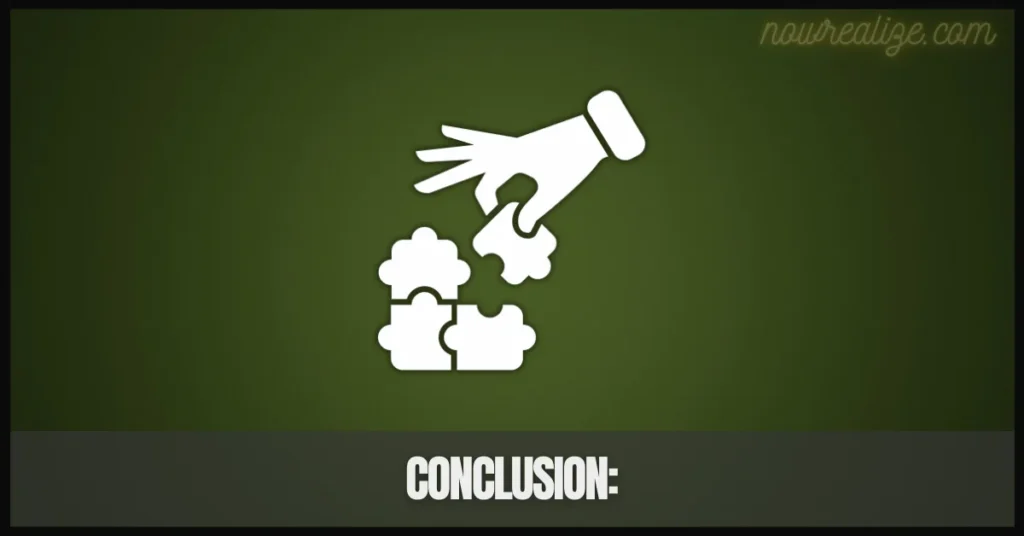
Stress is a common challenge, but it doesn’t have to control your life. By understanding your stressors, setting clear objectives, and incorporating relaxation techniques, you can significantly improve your overall well-being. Remember that modest steps can lead to large improvements. Embark on your path to a more peaceful, balanced life today. Please share your knowledge and tips in the discussions!
FAQs

What is the objective of stress management?
To identify and mitigate the sources of stress to enhance mental and physical health, and improve overall quality of life.
What is the purpose of stress management training?
To provide individuals with practical techniques and strategies to manage and reduce stress effectively in their daily lives and work environments.
What are the learning objectives for stress?
To understand the causes and effects of stress, develop effective coping mechanisms, and learn how to implement stress reduction techniques in various situations.
What are the objectives of stress management for teachers?
To help teachers recognize their stress triggers, adopt effective stress management strategies, improve their teaching effectiveness, and maintain a balanced personal and professional life.
What is the purpose of stress management skills?
To empower individuals with the necessary tools to handle stress constructively, prevent burnout, and promote emotional resilience.
What is the primary goal of stress management?
To minimize the negative impacts of stress on mental and physical health, thereby improving overall well-being and productivity.






